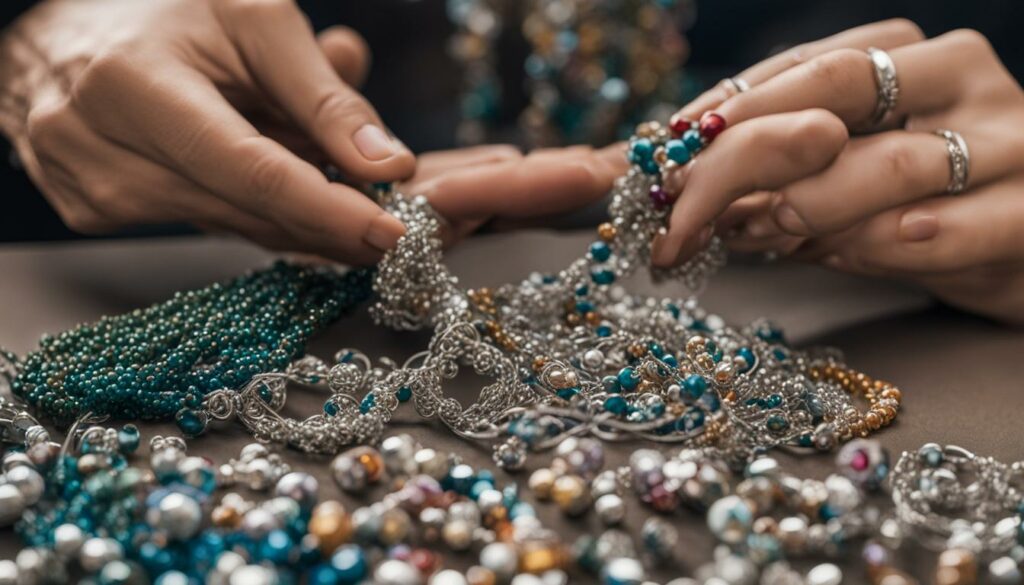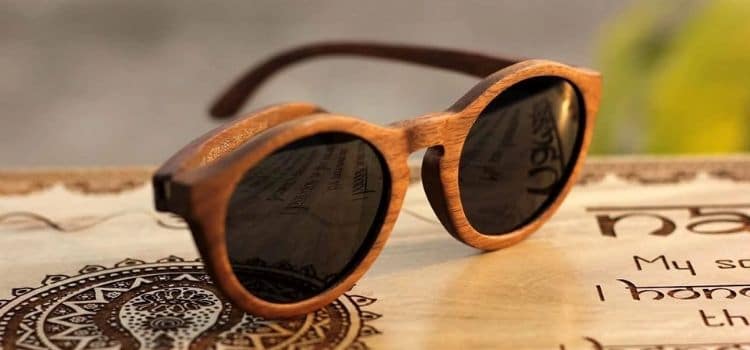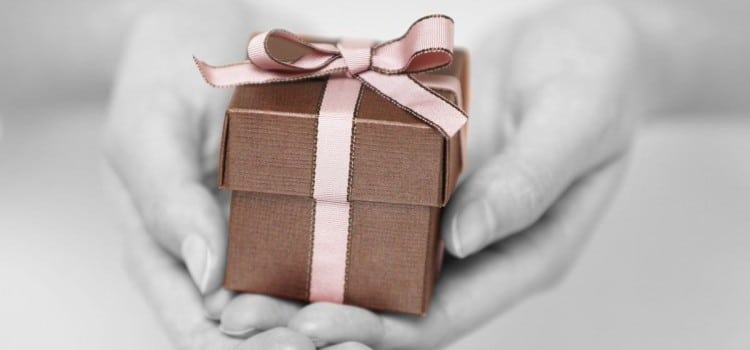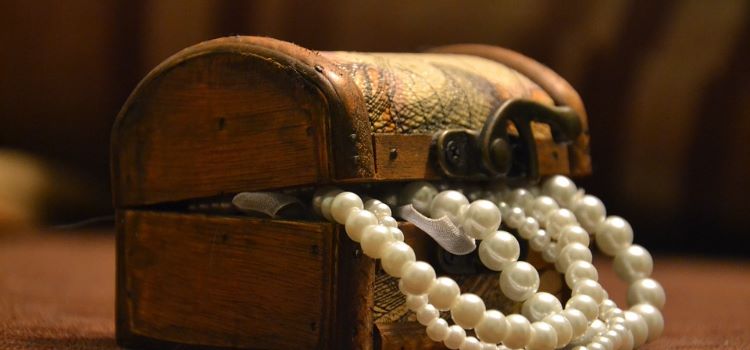Welcome to the fascinating world of beaded jewelry making! If you’ve ever admired a beautiful beaded necklace or bracelet and wondered how to create your own, you’ve come to the right place. In this article, I will guide you through the process of making stunning beaded jewelries right in the comfort of your own home.
Whether you’re a beginner or have some experience in jewelry making, DIY beaded jewelry is a wonderful way to express your creativity and create unique pieces that reflect your personal style. With just a few tools, materials, and a touch of inspiration, you’ll be well on your way to mastering the art of beaded jewelry making.
Before we dive into the nitty-gritty of the jewelry making process, let’s first explore the different types of jewelry making and gain some insights into the rich history of this craft. Understanding the techniques and materials involved will further enhance your journey as a beaded jewelry maker.
So, let’s gather our creativity, tools, and materials, and embark on this exciting adventure of making beautiful beaded jewelries at home. Get ready to let your imagination run wild and create dazzling pieces that will be cherished for years to come!
The Different Types of Jewelry Making
When it comes to jewelry making, there are various techniques and materials that you can explore. Let’s delve into the different types of jewelry making:
Beaded Jewelry
Beaded jewelry involves attaching beads using a needle, thread, or wire. It allows for endless creativity and offers a wide range of design possibilities. With different types of beads available, you can create unique pieces that reflect your personal style.
Wire Jewelry
Wire jewelry utilizes wire wrapping techniques to connect components without soldering. It offers the opportunity to create intricate and delicate designs. Using various wire gauges, different types of wire, and incorporating beads or gemstones, you can make stunning wire jewelry pieces.
Silver and Goldsmithing
Silver and goldsmithing involves shaping precious metals into jewelry and small objects. This technique requires specialized tools and techniques such as soldering, forging, and stone setting. With silver and gold as your canvas, you can create exquisite jewelry pieces that stand the test of time.
Glass Fused Jewelry
Glass fused jewelry uses a kiln to fabricate fused glass components. By layering and fusing different types of glass together, you can create vibrant and unique pieces. This technique offers endless possibilities in terms of color, shape, and texture.
Metal Clay Jewelry
Metal clay jewelry is made from clay that solidifies after firing in a kiln. It allows you to work with metal in a malleable form, giving you the freedom to create intricate designs. Metal clay can be shaped, textured, and refined before being fired, resulting in beautiful metal jewelry pieces.
These are just a few examples of the types of jewelry making techniques available. Each technique offers its own set of challenges and rewards, allowing you to explore your creativity and create unique pieces of wearable art.
| Technique | Description |
|---|---|
| Beaded Jewelry | Attaching beads using a needle, thread, or wire |
| Wire Jewelry | Connecting components using wire wrapping techniques |
| Silver and Goldsmithing | Shaping precious metals into jewelry using specialized tools |
| Glass Fused Jewelry | Fabricating fused glass components using a kiln |
| Metal Clay Jewelry | Creating jewelry from clay that solidifies after firing |
How to Make Jewelry at Home
Making jewelry at home is an enjoyable and accessible hobby that allows you to express your creativity and create beautiful pieces for yourself or as gifts. To begin the jewelry-making process, you’ll need a few essential tools and materials. Once you have these, you can start designing and crafting your unique jewelry pieces right at home.
Before you start making jewelry, it’s important to determine the type of jewelry you want to create. Do you want to make beaded jewelry, wire jewelry, or perhaps experiment with other techniques like metal clay or glass fused jewelry? Once you have decided, gathering inspiration is the next step. Look for design ideas online, in magazines, or even in nature. Sketching out your designs will help you visualize your project and plan the materials you’ll need.
Once you have your design and materials in mind, it’s time to acquire the necessary tools and supplies. Basic tools for jewelry making include wire cutters, pliers, bead organizers, and adhesive. Depending on the technique you choose, you may also need specialized tools like a kiln for metal clay jewelry or a torch for soldering metal components. With your tools and materials ready, set up a dedicated workspace with proper lighting and ventilation. This will ensure a comfortable and safe environment for your jewelry-making endeavors.
Gather Your Tools and Materials
Here’s a list of essential tools and materials to get you started with jewelry making at home:
| Tools | Materials |
|---|---|
| Wire cutters | Beads (glass, gemstones, pearls, etc.) |
| Pliers | Stringing materials (thread, wire, cord) |
| Crimping tool | Jewelry findings (clasps, jump rings, etc.) |
| Ruler | Adhesive (glue, epoxy, etc.) |
| Bead organizer | Charms or pendants |
| Needles | Spacers and connectors |
With these tools and materials in your jewelry-making arsenal, you’re ready to dive into the exciting world of creating your own unique jewelry pieces right at home. Whether you’re a beginner or have some experience, jewelry making is a versatile craft that allows for endless creativity and self-expression.
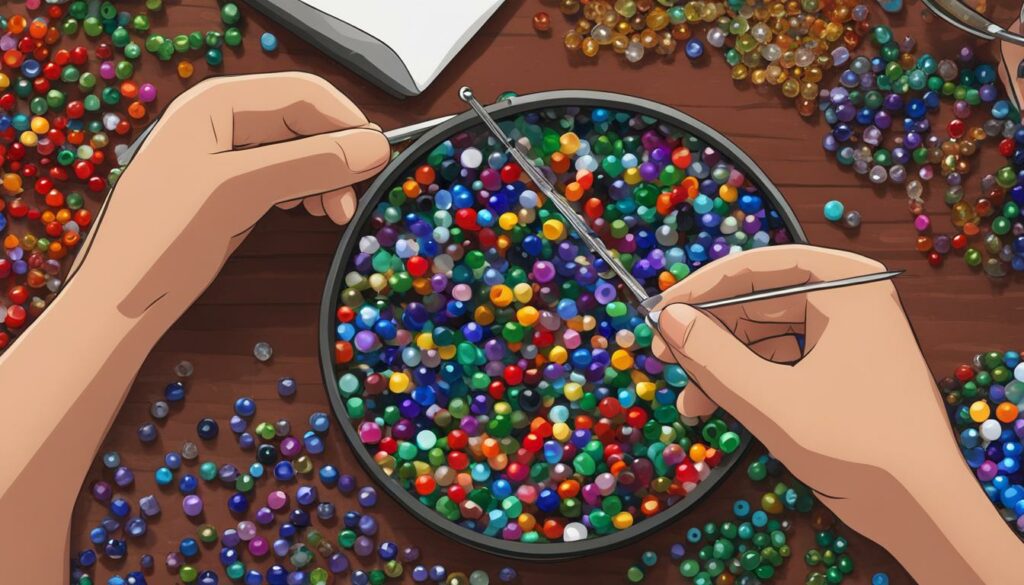
The History of Jewelry Making
The art of jewelry making has a fascinating history that spans thousands of years and is deeply rooted in various cultures. Ancient civilizations like the Egyptians, Romans, and Greeks were known for their exquisite jewelry, which not only served as adornments but also held symbolic and cultural significance. The history of jewelry making is a testament to human creativity, craftsmanship, and the desire for self-expression.
One of the earliest known examples of jewelry is a bone necklace discovered in a cave in Monaco, dating back to around 25,000 years ago. This simple yet beautiful piece showcases the ingenuity and artistic ability of our ancestors. Over time, jewelry making techniques evolved, incorporating a wide range of materials such as gemstones, precious metals, glass, and even organic materials like shells and feathers.
Ancient jewelry making techniques were passed down through generations, preserving traditional methods such as filigree, granulation, and cloisonné. Filigree involves intricate wirework to create delicate patterns, while granulation is the art of fusing tiny metal beads onto a surface. Cloisonné refers to the use of colored enamel within metal compartments. These techniques continue to be practiced today, alongside newer innovations in jewelry making.
The artistry and skill of ancient jewelers still inspire contemporary jewelry designers, who often incorporate elements from the past into their modern creations.
In recent years, technology has revolutionized the field of jewelry making. 3D printing allows for the creation of intricate designs with precision and ease, while laser cutting enables the production of delicate and detailed pieces. Additionally, lab-grown gemstones provide a more sustainable and affordable alternative to natural gemstones.
As we delve into the history of jewelry making, we gain a deeper appreciation for the craftsmanship and creativity behind each piece of jewelry. From ancient bone necklaces to modern 3D-printed rings, the art of jewelry making continues to evolve and captivate us with its beauty and timeless appeal.
| Period | Techniques | Materials |
|---|---|---|
| Ancient Egypt | Engraving, filigree, granulation, cloisonné | Gold, precious stones, glass, enamel |
| Ancient Rome | Casting, wirework, intaglio carving | Silver, gold, gemstones |
| Medieval Europe | Enameling, chasing, repoussé | Silver, gold, pearls |
| Renaissance | Millefiori, cameos, baroque designs | Gold, gemstones, pearls, glass |
| Modern Era | 3D printing, laser cutting, mixed media | Precious metals, gemstones, glass, acrylic |
Image:
How to Learn Jewelry Making
Learning jewelry making is an exciting journey that allows you to explore your creativity and develop a new skill. There are various resources available to help you get started and expand your knowledge in this craft.
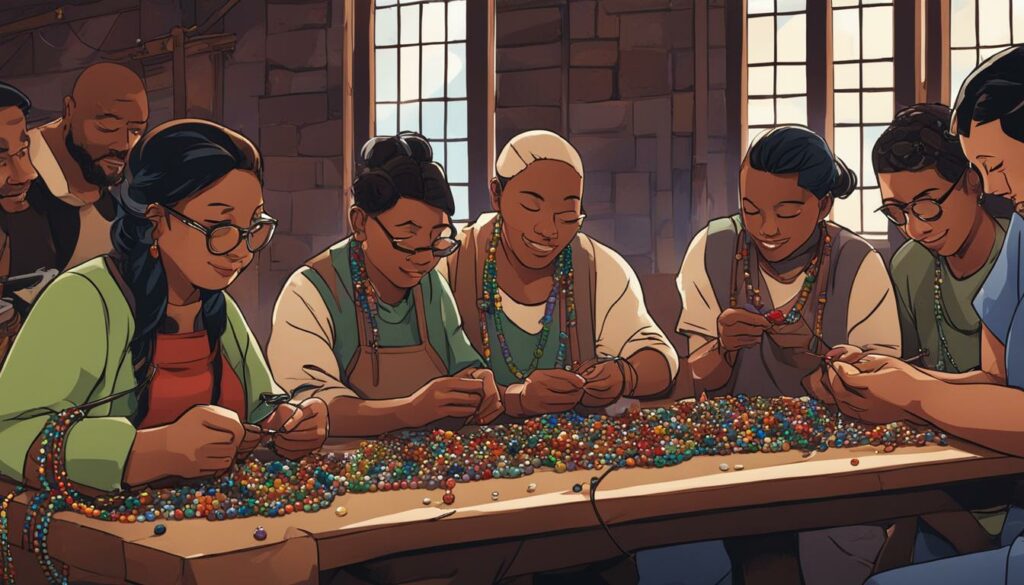
1. Jewelry Making Classes:
Attending jewelry making classes can provide hands-on instruction and guidance from experienced instructors. Local craft stores often offer beginner and advanced classes that cover various techniques such as beading, wirework, and metalwork. Online platforms like The Crucible also offer virtual classes on metalsmithing and other jewelry-making methods.
2. Online Resources:
The internet is a vast source of information and inspiration for jewelry making. Websites and blogs dedicated to this craft provide tutorials, design ideas, and step-by-step instructions for different projects. You can also find online communities and forums where jewelry enthusiasts share their knowledge and experiences. These resources can help you learn new techniques and stay updated on the latest trends in jewelry making.
3. Networking:
Connecting with other jewelry makers can be valuable for learning and expanding your skills. Joining local jewelry making groups or attending craft fairs and workshops allows you to meet like-minded individuals who share your passion. Networking provides opportunities to exchange ideas, collaborate on projects, and learn from each other’s experiences.
By taking advantage of these jewelry making resources, you can enhance your skills and create beautiful pieces that reflect your unique style and creativity.
Jewelry Making as a Hobby vs. Profession
When it comes to jewelry making, there are two main paths one can take: pursuing it as a hobby or as a profession. Both options offer unique benefits and considerations, depending on your individual goals and interests.
As a hobby, jewelry making allows for creative expression and exploration of different techniques without a significant financial investment. It can be a way to unwind, relax, and create beautiful pieces that reflect your personal style. Whether you’re making jewelry for yourself or as gifts for loved ones, it can bring joy and satisfaction in seeing your creations come to life.
On the other hand, making jewelry professionally requires more time, marketing, equipment, and education. Professional jewelers often specialize in a specific technique and may release their work in seasonal lines. This path requires a deeper commitment and dedication to honing your craft, as well as the business aspect of selling your creations. However, it can also provide the opportunity to turn your passion into a profitable venture and showcase your work to a larger audience.
Regardless of whether you choose to pursue jewelry making as a hobby or a profession, one thing remains constant: the joy and satisfaction that comes from creating something with your own hands and infusing it with your unique style and creativity.
In the end, the decision to pursue jewelry making as a hobby or profession comes down to your personal goals and interests. Consider your level of commitment, the time you can dedicate to it, and your long-term aspirations. Remember, there’s no right or wrong choice. What matters most is that you enjoy the process and find fulfillment in creating beautiful pieces of jewelry.
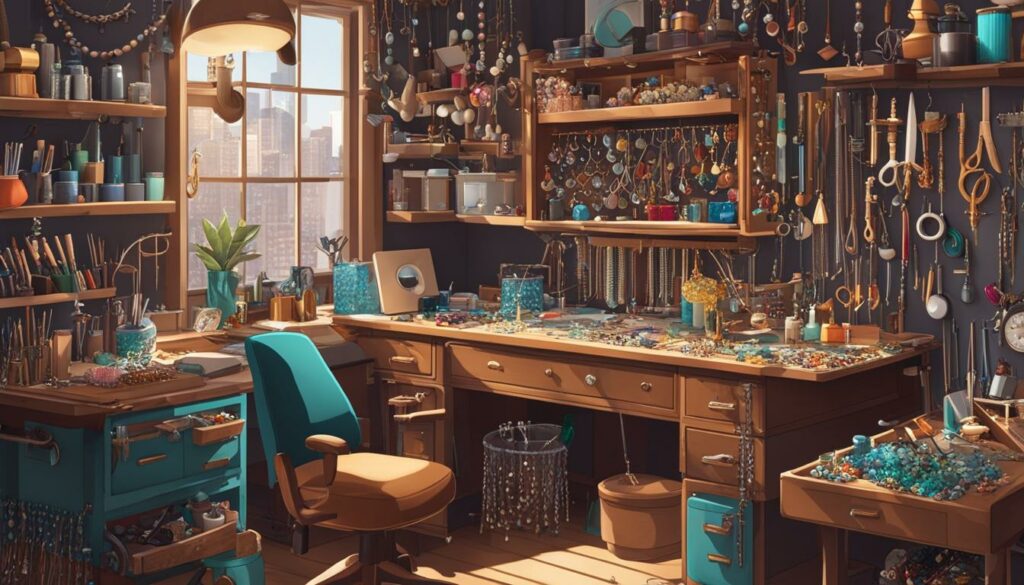
Table: Pros and Cons of Jewelry Making as a Hobby vs. Profession
| As a Hobby | As a Profession |
|---|---|
| Allows for creative expression and exploration | Opportunity to turn passion into profit |
| Relaxing and enjoyable activity | Requires investment in time, marketing, and education |
| No pressure to sell or meet deadlines | Opportunity to showcase work to a larger audience |
| Flexibility in terms of time and commitment | Specialization in a specific technique |
Regardless of whether you choose to pursue jewelry making as a hobby or a profession, one thing remains constant: the joy and satisfaction that comes from creating something with your own hands and infusing it with your unique style and creativity. So, embrace your love for jewelry making and let it guide you on whichever path feels right for you.
Tools and Materials for Jewelry Making
When it comes to jewelry making, having the right tools and materials is essential for creating beautiful and professional-looking pieces. Whether you’re a beginner or an experienced jewelry maker, having a well-stocked toolbox and a variety of materials at your disposal will make the creative process smoother and more enjoyable. Here are some essential tools and materials to consider:
Tools:
- Wire cutters: Used for cutting wires and metal components.
- Pliers: Different types of pliers, such as round-nose, chain-nose, and flat-nose, are indispensable for shaping wires, opening and closing jump rings, and holding small components.
- Crimping tool: Used for securely attaching clasps and closures to beading wire.
- Ruler: A precise ruler helps in measuring and planning the length of jewelry pieces.
- Bead organizer: An organizer with multiple compartments is ideal for storing and sorting beads of different sizes and colors.
- Adhesive: A strong adhesive like jewelry glue or E6000 is useful for attaching components that cannot be easily secured with wire or jump rings.
Materials:
- Glass beads: Versatile and available in a wide range of colors, shapes, and sizes.
- Beading cord: Nylon, silk, or elastic cords are commonly used for stringing beads.
- Metal wire: Copper, sterling silver, or gold-filled wire is perfect for wire wrapping and creating intricate designs.
- Gemstones: Adding gemstone beads or cabochons to your designs can elevate the overall look and create a luxurious feel.
Remember, the quality of your tools and materials can greatly impact the final result of your jewelry pieces. Investing in good-quality tools and using high-grade materials will not only ensure better craftsmanship but also increase the durability of your creations. Start building your collection of tools and materials, and let your creativity flow!
Jewelry Design Process: Turning Your Ideas into Stunning Pieces
Designing your own jewelry can be an incredibly fulfilling and creative process. Whether you’re a beginner or an experienced jeweler, the design phase is a crucial step in bringing your ideas to life. By following a few key steps, you can sketch, plan, and choose the materials for your jewelry making projects.
When it comes to sketching jewelry designs, start by visualizing the overall look and feel of your piece. Consider the shapes, colors, and materials that inspire you. Use paper and pencil to sketch multiple variations, exploring different design elements and arrangements. Label each part of the design with the specific materials you plan to use. This will help you determine the necessary tools and materials for turning your design into a reality.
Choosing the right materials is essential to creating beautiful jewelry. Consider the type of jewelry you are making and the desired aesthetic. Research different types of gemstones, beads, metals, and findings. Look for materials that complement your design and reflect your personal style. Keep in mind factors such as durability, price, and availability. Making informed choices about materials will ensure the longevity and quality of your finished piece.
Remember that the jewelry design process is a creative journey, and experimentation is encouraged. Don’t be afraid to think outside the box and try new techniques or materials. Mix and match different elements to create unique combinations. Your personal touch and unique style will shine through in the finished piece, making it truly one-of-a-kind.
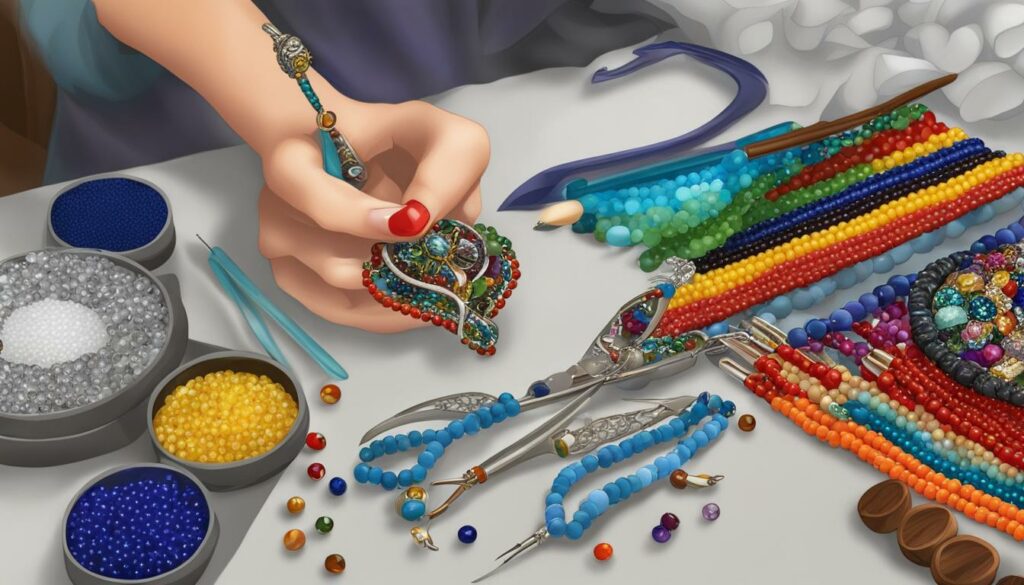
Table: Essential Tools and Materials for Jewelry Design
| Tools | Materials |
|---|---|
| Sketchbook or paper | Gemstones |
| Pencil or pen | Beads |
| Ruler | Metal wire |
| Template or stencils | Findings (clasps, jump rings, etc.) |
| Calipers or measuring tool | Chains or cords |
| Jewelry pliers | Enamel or paint |
| Wire cutters | Resin or epoxy |
| File or sandpaper | Stringing materials |
As you embark on your jewelry design journey, remember that practice and patience are key. Take the time to refine your skills and explore new techniques. Each piece you create is an opportunity for growth and self-expression. So let your creativity soar and enjoy the process of bringing your unique jewelry designs to life.
Jewelry Making Workspace: Organizing Tools and Ensuring Safety
Creating a dedicated workspace for jewelry making is crucial for a smooth and enjoyable crafting experience. By organizing your tools and materials and taking necessary safety precautions, you can maximize productivity and minimize potential hazards. Here are some tips to help you set up your jewelry making workspace:
Organizing Your Tools and Materials
- Designate specific storage areas for your tools and materials. Use drawers, containers, or wall-mounted organizers to keep everything easily accessible.
- Arrange your tools in a logical order, such as separating pliers, cutters, and other hand tools.
- Sort your beads, findings, and other components by type, color, or size to make them easier to find during projects.
- Label your containers or use clear storage solutions to quickly identify what you need.
Ensuring Safety in Jewelry Making
Safety should always be a priority when working with jewelry-making tools and materials:
- Wear protective eyewear to shield your eyes from small flying objects or bits of metal.
- Use a well-ventilated area or wear a respirator when working with materials that produce fumes or dust, such as soldering or polishing.
- Store hazardous chemicals, such as adhesives or cleaners, away from heat sources and out of reach of children or pets.
- Follow manufacturer instructions when using tools or equipment, such as torches or kilns, to prevent accidents or injuries.
By creating an organized and safe workspace, you can focus on your creativity and enjoy the process of making beautiful jewelry at home. Remember to always prioritize safety and keep your tools and materials well-maintained for optimal results.
Finding Inspiration for Jewelry Making
When it comes to jewelry making, finding inspiration is key to creating unique and beautiful designs. Whether you’re a beginner or an experienced jewelry maker, sources of inspiration can ignite your creativity and help you develop your own style. Here are some ideas to help you find inspiration for your next jewelry-making project:
- Explore nature: Take a walk in the park, visit a botanical garden, or simply observe the beauty of the natural world around you. The colors, shapes, and textures of flowers, leaves, and other elements can inspire new jewelry designs.
- Visit museums and galleries: Art exhibits and historical collections can provide a wealth of inspiration. Explore different art forms, from paintings and sculptures to ancient artifacts, and let the creativity of other artists spark your own ideas.
- Browse fashion magazines and websites: Fashion trends can be a great source of inspiration for jewelry designs. Look for jewelry pieces that catch your eye and consider how you can incorporate similar elements or styles into your own creations.
- Join jewelry-making communities: Connect with fellow jewelry makers through online forums, social media groups, or local meet-ups. Sharing ideas, techniques, and experiences with like-minded individuals can inspire you and help you grow as a jewelry maker.
Remember, inspiration can come from anywhere and everywhere. Keep an open mind, experiment with different materials, colors, and techniques, and let your imagination guide you. Happy jewelry making!
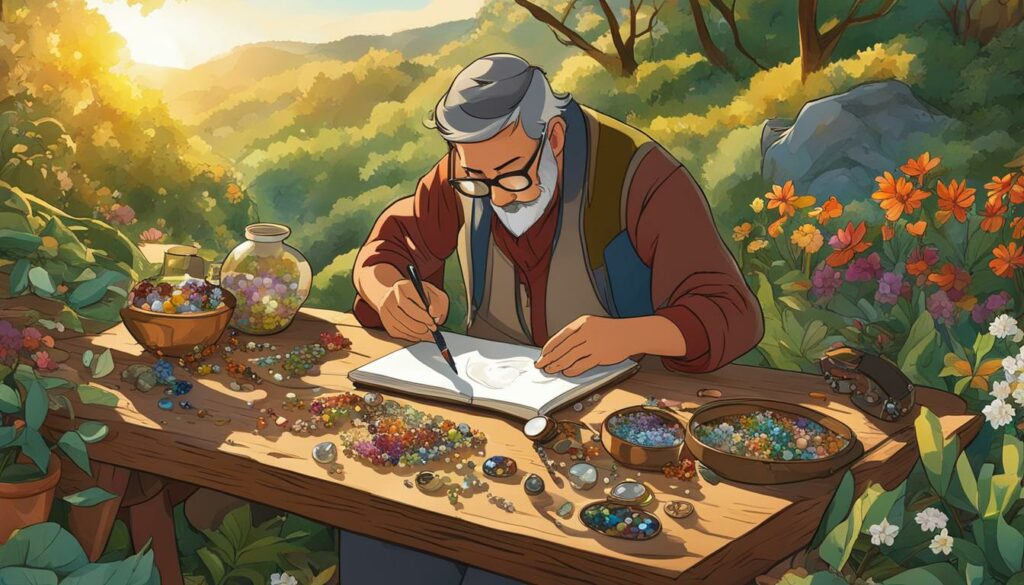
Gemstone Color Chart
| Gemstone | Color |
|---|---|
| Diamond | Colorless |
| Ruby | Red |
| Emerald | Green |
| Sapphire | Blue |
| Amethyst | Purple |
| Citrine | Yellow |
Starting Small in Jewelry Making
When it comes to diving into the world of jewelry making, starting small is the key to success. By beginning with beginner jewelry projects and learning step by step, you can develop your skills and confidence while creating beautiful pieces. Here are some tips to help you get started on your jewelry making journey.
1. Choose Simple Projects
As a beginner, it’s important to select projects that are suitable for your skill level. Look for projects that involve basic techniques and a limited number of materials. Simple projects like beaded bracelets or earrings are perfect for beginners. They allow you to practice fundamental techniques such as stringing beads and attaching clasps.
2. Gather the Necessary Tools and Materials
Before you begin your first project, make sure you have all the essential tools and materials. Basic jewelry making tools include wire cutters, pliers, and beading needles. As for materials, start with a variety of beads, beading thread or wire, and findings such as jump rings and clasps. Investing in a beginner’s jewelry making kit can make it easier to get started.
3. Follow Tutorials and Seek Guidance
Learning jewelry making step by step is made much easier with the help of tutorials and guidance. There are many online resources that offer free tutorials for beginners. These tutorials provide detailed instructions and visuals to help you understand each step of the process. Additionally, consider joining a local jewelry making group or taking a beginner’s class to learn from experienced makers.
Remember, starting small allows you to build a strong foundation in jewelry making. By taking on beginner projects, gathering the right tools and materials, and seeking guidance, you’ll be on your way to creating stunning jewelry in no time.
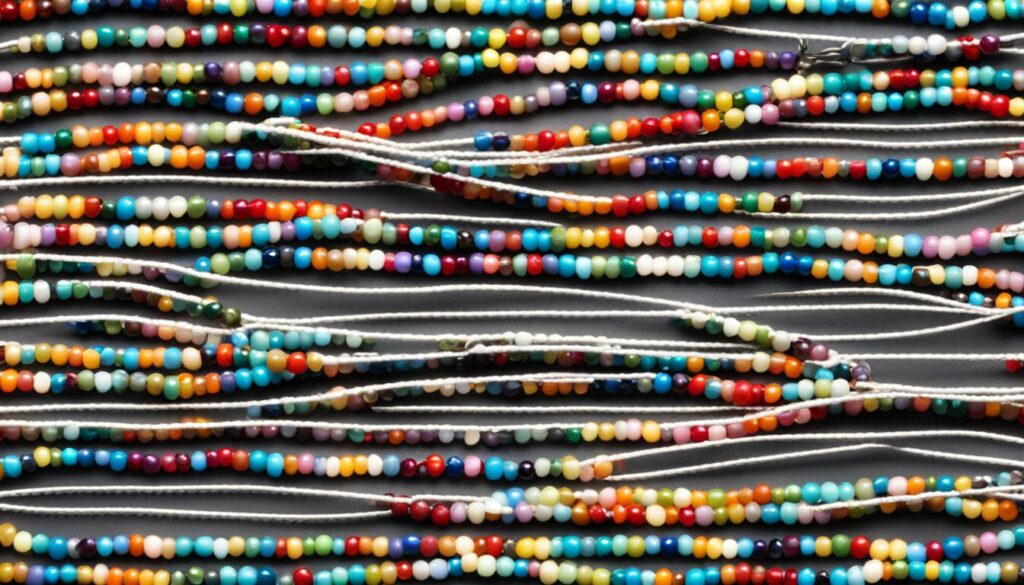
Learning the Jewelry-Making Lingo
As you delve into the world of jewelry making, understanding the terminology used in this craft is essential. Whether you’re reading instructions, exploring design possibilities, or communicating with fellow jewelry enthusiasts, having a grasp of jewelry-making terms will enhance your knowledge and confidence. Below, I’ve compiled a list of common jewelry-making terms to help you navigate this creative endeavor.
Essential Jewelry-Making Terms
| Term | Definition |
|---|---|
| Jump Ring | A metal ring used to connect jewelry components together. |
| Clasp | A closure mechanism, such as a lobster claw or toggle, used to fasten a necklace or bracelet. |
| Bezel | A metal setting that holds a gemstone or other decorative element in place. |
| Crimp Bead | A small metal bead used to secure the ends of jewelry wire. |
| Headpin | A long, thin piece of wire with a flat or decorative end used to create dangles or attach beads. |
| Eye Pin | Similar to a headpin, but with a loop at one end to connect to other jewelry components. |
| Seed Beads | Small, rounded beads often used as spacers or for intricate bead weaving designs. |
| Crimp Tool | A specialized tool used to secure crimp beads or tubes onto jewelry wire. |
With this knowledge of jewelry-making terms, you’ll be able to follow tutorials, decipher patterns, and engage in discussions with other jewelry makers more confidently. Exploring the vast world of jewelry making becomes even more exciting when you have a strong foundation in the language of the craft.
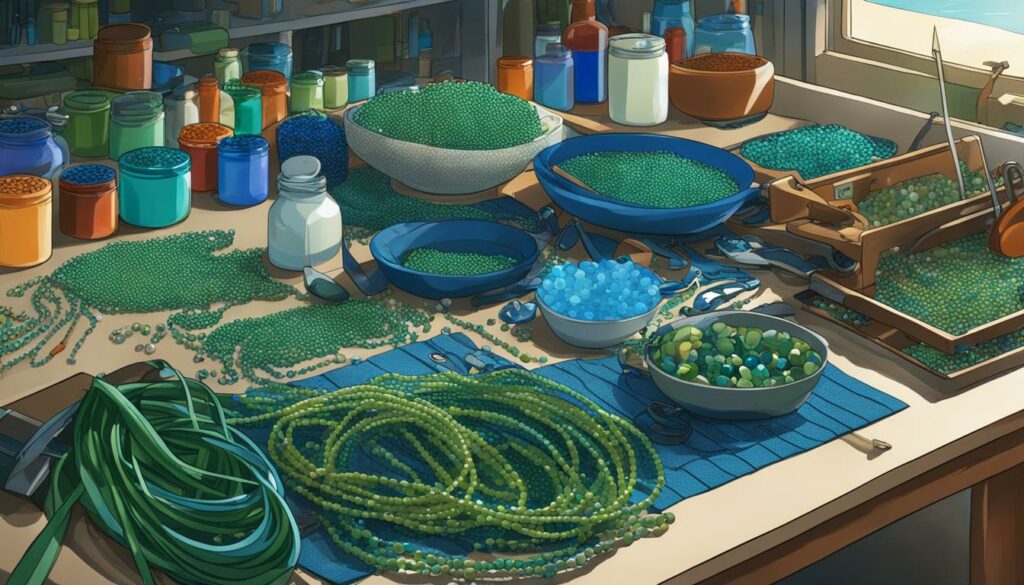
Remember, as you continue your jewelry-making journey, always strive to expand your vocabulary and stay open to learning new techniques. The more familiar you become with jewelry-making terms, the more effectively you can communicate your ideas and bring your creative visions to life.
Creating Unique Jewelry Styles
When it comes to jewelry making, one of the most exciting aspects is the opportunity to create unique and personalized pieces. Developing your own jewelry-making style allows you to express your creativity and showcase your individuality. Whether you’re a beginner or an experienced jewelry maker, experimentation is key to finding your unique style.
Experimentation in jewelry making involves exploring different techniques, materials, and color combinations. Try incorporating new elements into your designs, such as mixing metals, using unconventional materials, or experimenting with different textures. Don’t be afraid to step out of your comfort zone and push the boundaries of traditional jewelry making.
As you continue to experiment, you’ll discover what resonates with your personal aesthetic and what makes your designs stand out. Pay attention to the feedback you receive from others, as it can provide valuable insights and help you refine your style. Remember, creating unique jewelry styles is a journey that evolves over time, so embrace the process and let your creativity shine.
Embracing Individuality
One of the keys to creating truly unique jewelry styles is embracing your individuality. Don’t be afraid to let your personality shine through in your designs. Consider elements that resonate with you personally, such as symbols, colors, or themes that hold special meaning. By infusing your own story and experiences into your jewelry, you’ll create pieces that are deeply personal and one-of-a-kind.
Exploring Unconventional Techniques
Another way to create unique jewelry styles is by exploring unconventional techniques. Step outside the traditional jewelry-making box and experiment with techniques that are less commonly used. For example, try incorporating mixed media elements into your designs, such as resin, fabric, or found objects. This will add an unexpected and distinct touch to your jewelry pieces.
Seeking Inspiration Everywhere
Inspiration can be found in the world around you. Look for inspiration in nature, architecture, fashion, or even other forms of art. Draw from different cultures, eras, or design movements to create jewelry styles that are truly unique. Keep a sketchbook or a digital inspiration board to capture ideas and references that inspire you along the way.
Summary
Crafting unique jewelry styles is an exciting journey of self-expression and creativity. Through experimentation, embracing individuality, exploring unconventional techniques, and seeking inspiration everywhere, you’ll develop your own distinct jewelry-making style. Remember to stay true to yourself and let your passion guide you as you create jewelry pieces that are as unique as you are.
Conclusion
In conclusion, jewelry making is a versatile craft that offers a wide range of creative possibilities. Whether you choose to make beaded jewelry, wire jewelry, or explore other techniques like silver and goldsmithing, glass fused jewelry, or metal clay jewelry, the process can be enjoyable and rewarding.
By following the steps outlined in this article, you can successfully make beautiful jewelry at home. Start by designing your piece, gathering the necessary tools and materials, and setting up a dedicated workspace. Take inspiration from the rich history of jewelry making and let your creativity shine in every piece you create.
Remember that jewelry making can be pursued as both a hobby and a profession. Whether you enjoy it as a creative outlet or decide to turn it into a business, the choice is yours. With practice and dedication, you can develop your skills and create unique jewelry styles that reflect your personal taste and artistic expression.
So, why wait? Dive into the world of jewelry making and discover the endless possibilities that await. Start small and gradually explore different techniques and materials. With time, patience, and a passion for creativity, you can master the art of jewelry making and enjoy the satisfaction of wearing or sharing your own handmade treasures.
FAQ
What types of jewelry making are there?
There are different types of jewelry making, including beaded jewelry, wire jewelry, silver and goldsmithing, glass fused jewelry, and metal clay jewelry.
What tools and materials do I need to make jewelry at home?
The tools and materials you need depend on the technique you choose, but basic tools include wire cutters, pliers, crimping tool, ruler, bead organizer, and adhesive. Materials range from glass beads and beading cord to metal wire and gemstones.
How can I get started with jewelry making?
To get started with jewelry making, determine the type of jewelry you want to make, gather inspiration, sketch your design, acquire the necessary tools and materials, set up a dedicated workspace, and start making your jewelry using online tutorials or classes.
How can I learn jewelry making?
You can learn jewelry making by taking classes at a local craft store or online, exploring online tutorials and resources, and networking with other jewelry enthusiasts. The Crucible is one resource that offers classes on metalsmithing and other jewelry-making methods.
Can jewelry making be a hobby or a profession?
Yes, jewelry making can be pursued as a hobby or a profession. As a hobby, it allows for creative exploration without a significant financial investment. Making jewelry professionally requires more time, marketing, equipment, and education.
How do I design my own jewelry piece?
Design your own jewelry piece by sketching your design on paper, considering shapes, colors, and materials that inspire you. Label each part of the design with the materials you need to acquire.
What is the history of jewelry making?
Jewelry making dates back thousands of years and has a rich history across different cultures. The earliest known example of jewelry is a bone necklace from 25,000 years ago. Ancient civilizations like the Egyptians and Romans adorned themselves with jewelry.
What are some essential tools for jewelry making?
Some essential tools for jewelry making include wire cutters, pliers, crimping tools, rulers, bead organizers, and adhesives. Using high-quality tools ensures better results and durability of the jewelry.
How do I set up a workspace for jewelry making?
Set up a dedicated workspace for jewelry making by choosing a clean, well-lit area with a solid workbench. Organize your tools and materials for easy access, ensure proper ventilation and safety measures, and create a comfortable seating arrangement.
Where can I find inspiration for jewelry making?
You can find inspiration for jewelry making by conducting online searches, exploring Pinterest, visiting jewelry stores, and drawing inspiration from vintage pieces or creating designs from scratch. Inspiration can come from a variety of sources.
How should I start if I’m a beginner in jewelry making?
As a beginner, it is recommended to start small and gradually build up your skill set. There are many free project tutorials available online for beginners to practice and develop their techniques.
What is the importance of understanding jewelry-making terminology?
Understanding jewelry-making terminology is important for following instructions, communicating within the jewelry-making community, and choosing the right supplies for your projects.
How can I develop my own unique jewelry style?
You can develop your own unique jewelry style by considering your personal preferences and favorite jewelry pieces when creating your own designs. Experiment with different techniques, materials, and color combinations to incorporate your style and creativity.
Why is jewelry making a rewarding craft?
Jewelry making is a creative and rewarding craft because it allows for self-expression, personal adornment, and the opportunity to create unique and beautiful pieces of jewelry.
Source Links
- https://www.thecrucible.org/guides/jewelry-making/
- https://www.dummies.com/article/home-auto-hobbies/crafts/jewelry-making/jewelry-making-and-beading-for-dummies-cheat-sheet-208024/
- https://www.thebeadtraders.com/blogs/news/beading-101-how-to-get-started-making-jewelry

Hey lovely readers! My name is Chantal and I am obsessed with everything accessory and jewelry. My husband (and best friend) John and I, have been writing content for this blog for over 4 years now started the RTP store with over 4000 curated accessories and jewelry. We are traveling around the world to find the latest products, negotiate the best prices and find the best quality for our readers. We have managed to make our passion for feeling and looking good into our work. We are always open to new product suggestion, improvements or feedback. If you would like to chitchat with me, email me here!
